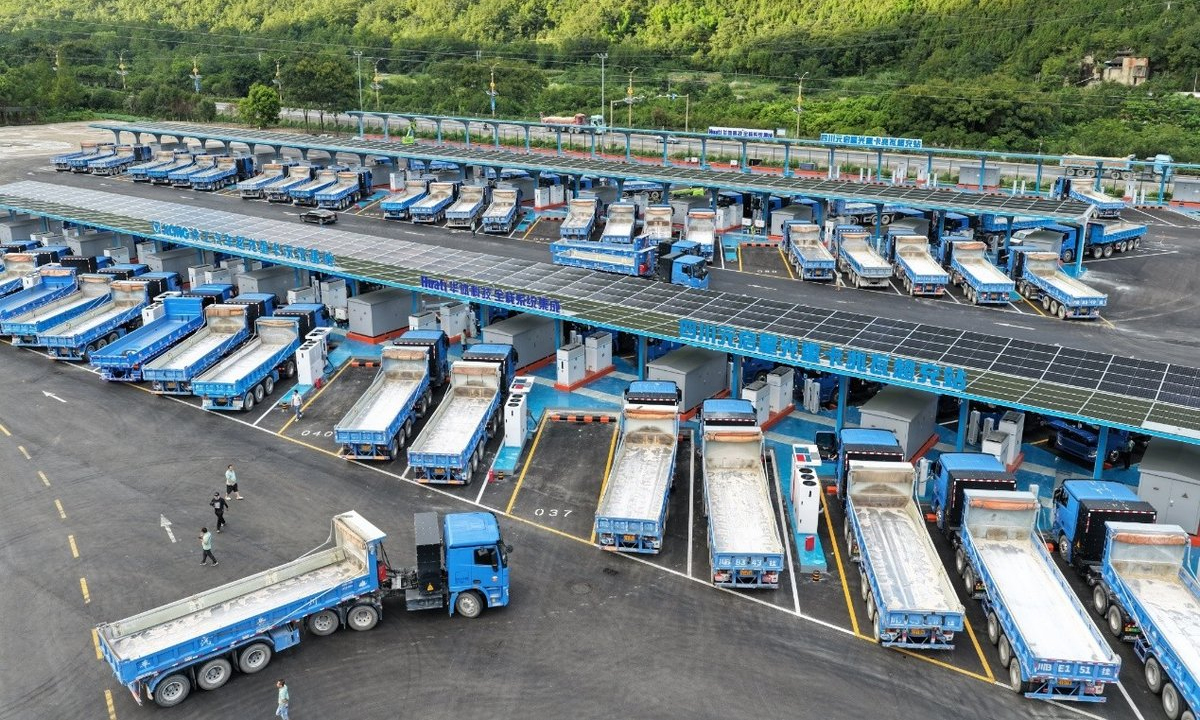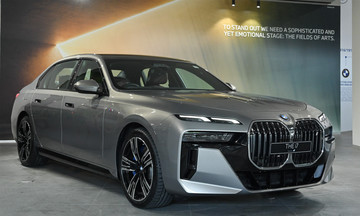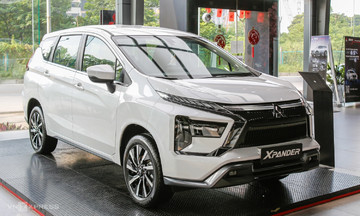The station provides super-fast charging for short- and medium-haul transportation of bulk materials in sand and gravel mines in northern Sichuan. With an investment of 150 million CNY (20.86 million USD), the station covers 46,538 m2.
Designed with a 100 MW capacity, the station features 18, 1.44 MW super-fast charging areas and 108, 600 kW charging areas. It can serve up to 700 heavy-duty electric trucks daily, providing over 300,000 kWh of electricity per day. The facility also incorporates a nearly 1 MW solar canopy and two 215 kWh wind-liquid intelligent cooling energy storage units.
 |
The 100 MW charging station for heavy-duty trucks in Sichuan, China. Photo: Huawei |
The 100 MW charging station for heavy-duty trucks in Sichuan, China. Photo: Huawei
Using Huawei Megawatt super-charging equipment, the station is compatible with 3.5C heavy-duty super-charging trucks, allowing drivers to "charge for 5 minutes, drive for 100 km." Truck owners are expected to save 1.5 CNY (0.21 USD) per km on energy costs, equivalent to 150,000 CNY (21,000 USD) annually, essentially "saving the cost of a truck in three years." For station operators, the increased charging efficiency is expected to improve operational efficiency by over 15%.
A key innovation is the station's enhanced grid-friendliness. Huawei's solution integrates smart photovoltaic arrays and energy storage systems to create a "source-grid-load-storage microgrid."
This design allows the station to operate in both grid-connected and off-grid modes, ensuring reliable service even during peak demand or local power outages. By balancing power input from solar, storage, and real-time demand, the microgrid reduces strain on the wider power grid while improving overall stability and resilience.
Furthermore, this microgrid leverages virtual power plant (VPP) technology to interact with the grid, maximizing renewable energy consumption and reducing costs. The integrated solution implemented at the plant generates approximately 5,000 kWh of electricity daily.
This not only reduces operating costs through peak-to-valley price arbitrage, drawing power when prices are low and supplying it during high demand, but also creates new revenue streams for operators. The system promotes true coordination between vehicles, charging stations, and the grid, paving the way for a more sustainable and economically viable energy ecosystem.
The electrification of heavy-duty trucks is projected to further reduce carbon emissions by 45,000 tons annually.
My Anh (Interesting Engineering)










